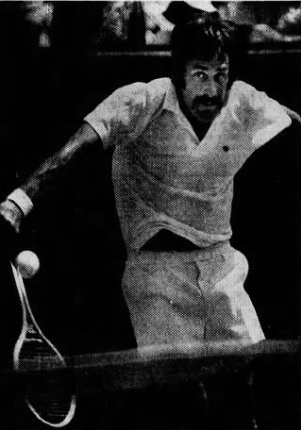The strangest thing about contemporary reactions to the advent of World Team Tennis is that no one seemed to realize just how weird it was.
Let’s review. For decades, the contours of the tennis season had been more or less stable. Specific events came and went, but the basic idea was consistent: a global collection of single-elimination tournaments with regional circuits in each major tennis-playing nation. The pre-1968 professional tours didn’t quite fit that mold, but even they stuck with the notion of head-to-head, rivalry-based singles play. The only teams in tennis were doubles pairs and national groupings for Davis Cup, Fed Cup, and Wightman Cup.
Then, in 1973, a bunch of North American promoters, many of whom knew more about ice hockey than tennis, proposed a 16-team league that would play a 44-match schedule between May and July each year. They raised money, rented venues, sold their vision to players, and charged ahead.
Yes, May to July, that notorious wasteland on the tennis calendar.
I mean, what part of this wasn’t bizarre?
The league crept closer to reality on August 3rd when it held its official draft. The 16 teams took turns choosing a total of 312 players. Miami, with the first overall selection, went with local heroine Chris Evert. Filling out the top six, in order, were Kerry Melville, Rod Laver, Jimmy Connors, Ken Rosewall, and Rosie Casals.
Again, think about this for a moment. It was basically a bunch of rich guys and hucksters playing fantasy tennis, willing to redesign the entire sport to make it happen.
Still, the principals took the league seriously. Some of them had very good reasons to do so. The biggest winners on draft day were Houston and Philadelphia, who picked up John Newcombe and Billie Jean King, respectively. Newk and King were among a handful of players who had already committed to contracts with the league. In exchange, they were given some say in where they ended up. Billie Jean signed for a reported $100,000 per year for five years, and she was jazzed at the prospect of giving long-suffering Philadelphians a winning team to get behind. Newcombe, who would earn around $75,000, welcomed the Team Tennis format as a way to stay closer to his Texas ranch.
Newk, though, might not have understood exactly what he was getting into. Neil Amdur wagged in the New York Times that the stars were “lured by the chance to make more money for less work.” Maybe. But: 44 matches in three months? Including constant travel from one corner of the United States to the other? With Wimbledon stuck in the middle? Newcombe wasn’t going to spend much time at the ranch, and nobody was going to make it to the end of that season refreshed and ready to take on the rest of the 1974 tournament slate.
Owners were jumping into the unknown, too, maybe even more than the players were. No one knew exactly which stars would suit up, beyond the small group of early signees. Evert was noncommittal. Stan Smith fell to the third round and Ilie Năstase dropped to the fourth, as they weren’t expected to participate. Some teams seemed to run out of ideas: San Diego selected retired stars Maria Bueno and Karen Susman. Chicago spent their ninth-round pick on Bobby Riggs, and Toronto rounded out their haul with a local sportswriter named George Gross.
Only one franchise seems to have considered the value of expertise. Cleveland tapped Richard González, the long-time pro champion, as a draft day advisor. Gorgo selected Björn Borg with the 13th overall choice–a savvy call, as long as the Swede would play. In the sixth round, the 45-year-old González named himself.
Even though the 1973 draft ran out of steam after a few hundred picks, Gorgo foresaw a future with a nearly inexhaustible talent pool, one in which Team Tennis would play a valuable role. “It opens up the whole game,” he said. “Within ten years, there will be a thousand good players who’ll need some place to play.”
When the league was announced back in June, promoter Jerry Saperstein compared the venture to a game of craps. Yet the range of possible outcomes for World Team Tennis was more staggering than the stakes in the wildest casino game. The league could quickly go bust in a flurry of lawsuits, or it could prove a going concern, forcing the rest of the tennis world to make room. Win or lose, the sport would never be the same.
* * *
This post is part of my series about the 1973 season, Battles, Boycotts, and Breakouts. Keep up with the project by checking the TennisAbstract.com front page, which shows an up-to-date Table of Contents after I post each installment.
You can also subscribe to the blog to receive each new post by email:
